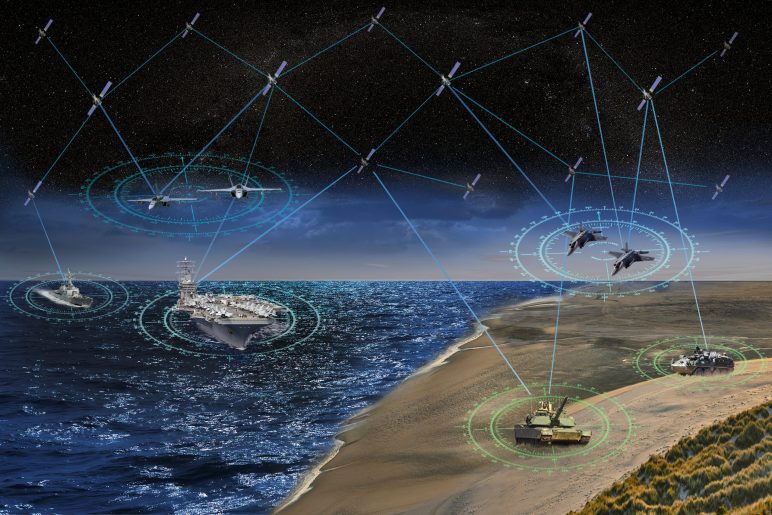The Defense Advanced Research Projects Agency (DARPA) has awarded Northrop Grumman a $13.3 million contract Phase 2 of the Blackjack program to “advance its Position, Navigation, and Timing (PNT) payload through emulation and Critical Design Review, and build PNT payload units destined for space flight.”
DARPA’s Blackjack program develops and demonstrates the critical elements for a global high-speed network in low Earth orbit (LEO) that provides the Department of Defense with highly connected, resilient, and persistent coverage. Blackjack seeks to incorporate commercial sector advances in LEO, including design of LEO constellations intended for broadband internet service, of which the design and manufacturing could offer economies of scale previously unavailable. DARPA is interested in capitalizing on these advances to demonstrate military utility, emphasizing a commoditized bus and low-cost interchangeable payloads with short design cycles and frequent technology upgrades.
“Northrop Grumman’s software-defined Positioning, Navigation and Timing (PNT) technology will offer military users an agile new signal from low Earth orbit (LEO) that is not dependent on existing satellite navigation systems,” said Dr. Nicholas Paraskevopoulos, chief technology officer and sector vice president, emerging capabilities development. “Warfighters depend on assured PNT not only for traditional missions like force projection and joint operations, but also for emerging autonomous and distributed missions. We are demonstrating what’s possible from a highly connected, resilient and persistent LEO constellation.”

A key Blackjack program objective is to demonstrate payloads in LEO to augment National Security Space (NSS) assets. The driver will be to show LEO performance that is on par with current systems in geosynchronous orbit with the spacecraft combined bus, payload(s), and launch costs under $6 million per orbital node while the payloads meet size, weight, and power constraints of the commercial bus.
NSS assets, critical to U.S. warfighting capabilities, traditionally reside in geosynchronous orbit to deliver persistent overhead access to any point on the globe. In the increasingly contested space environment, these exquisite, costly, and monolithic systems have become vulnerable targets that would take years to replace if degraded or destroyed.
The contract includes options; the $13.3 million total is the potential value with all options exercised. The contract moves forward work at Northrop Grumman’s Linthicum Heights, MD and Woodland Hills, CA facilities.






